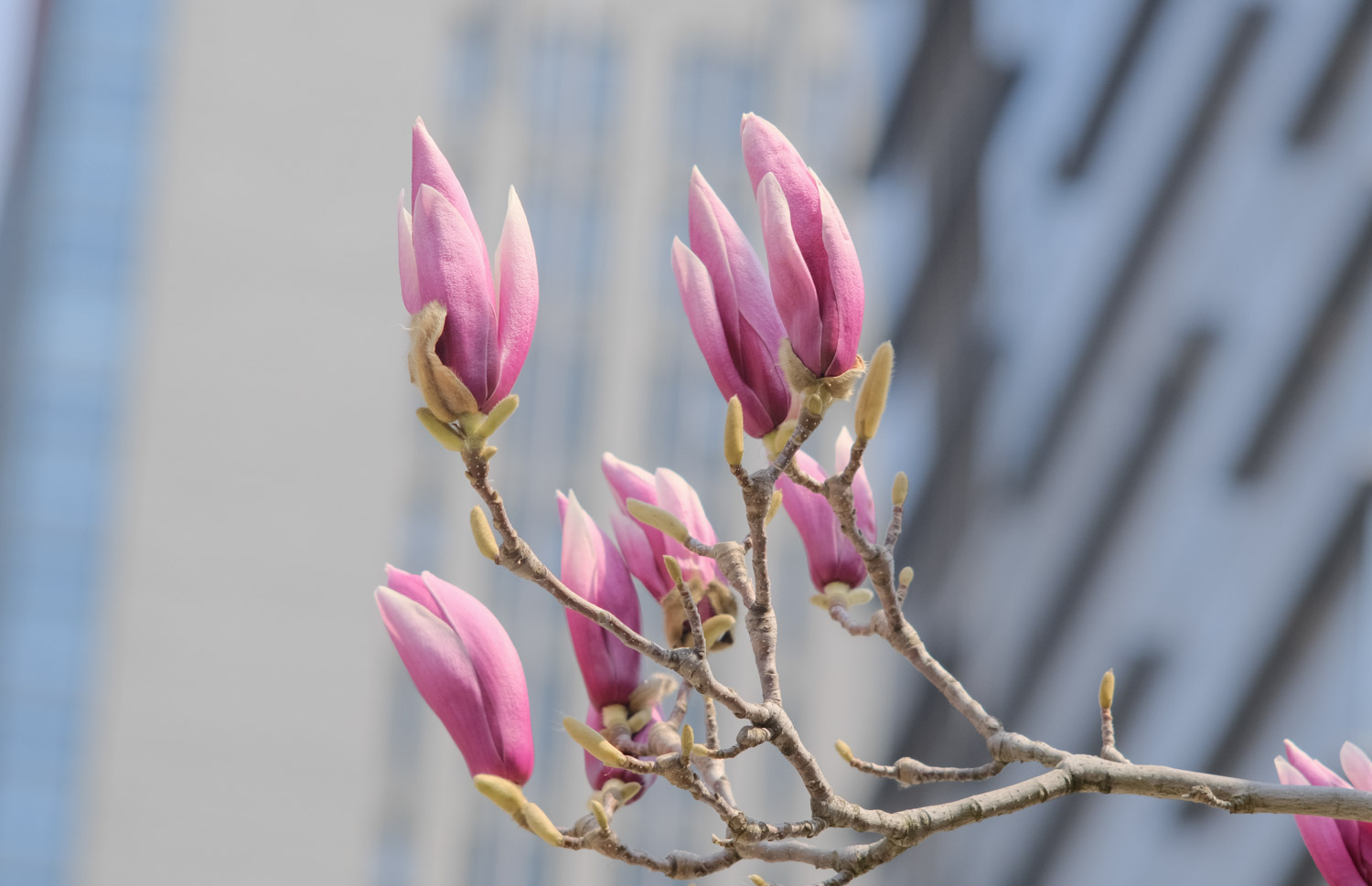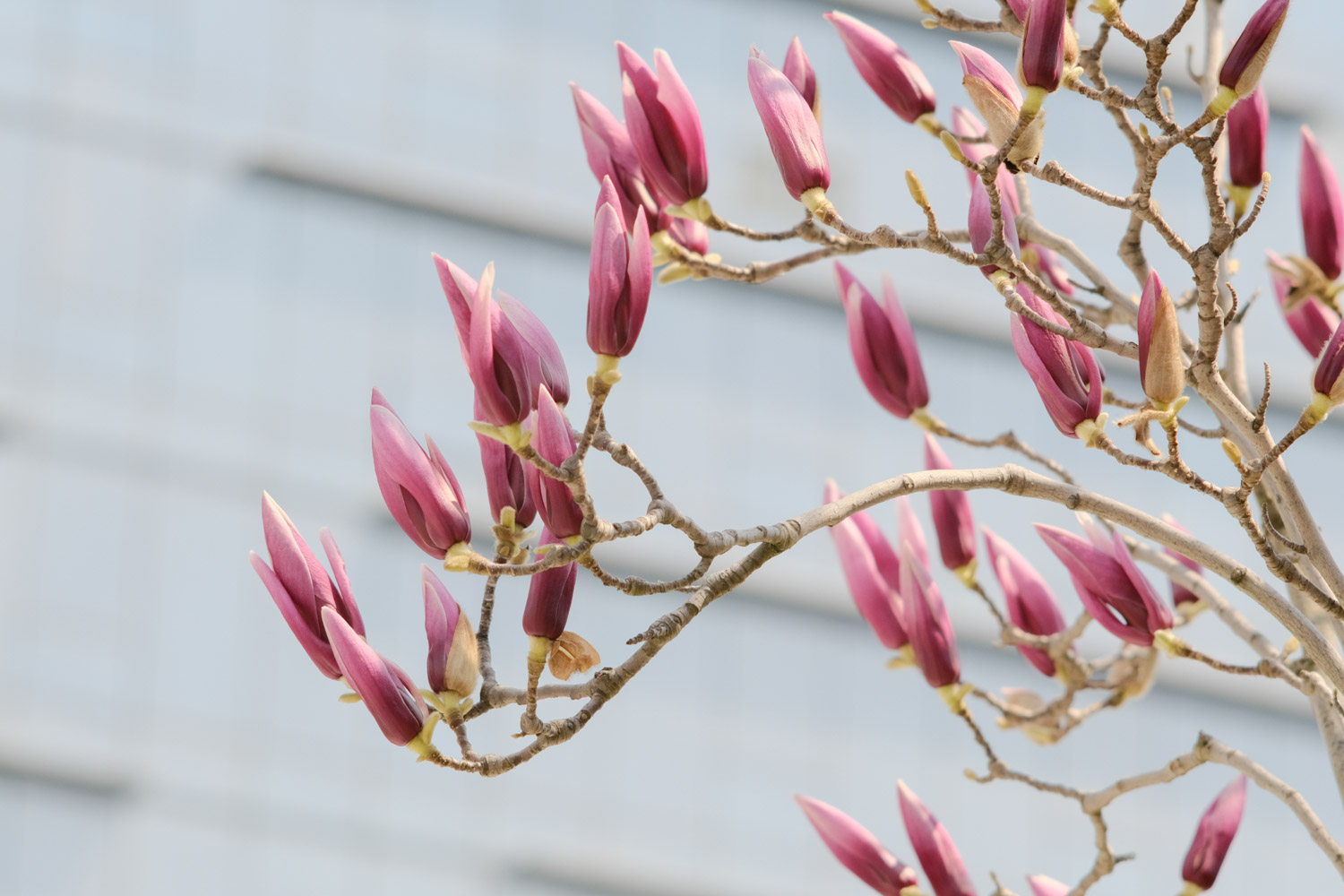Cultivation method of Purple Magnolia
Basin soil
Purple Magnolia likes loose and fertile acidic and slightly acidic soil. It can be mixed with rotten leaf soil and vegetable garden soil in the same amount as the culture soil, and add 50 to 150 grams of bone powder or nitrogen, phosphorus and potassium compound fertilizer to the soil
basin should be slightly larger, and some hard plastic foam blocks should be placed on the bottom of the basin to enhance drainage and prevent rot. Turn over the pot and change the soil once a year or every other year, and keep 1 / 2 to 1 / 3 of the old soil
Watering
Purple Magnolia likes to be wet and is afraid of waterlogging. Therefore, it is very important to water it in a timely and appropriate amount. From the beginning of spring to flowering, the basin soil remains moist but not wet; After flowering, the pot soil remains moist without waterlogging; After falling leaves, the basin soil can be kept slightly moist but not dry
Drought and waterlogging shall not be allowed at any time, especially in rainy season
Fertilizer
Purple Magnolia likes fertilizer. When applying fertilizer, we should seize the two key opportunities of February before flowering and may after flowering. Apply nitrogen, phosphorus and potassium compound fertilizer once every ten days or so. The former will expand buds and open flowers, while the latter will promote more pregnant buds and more flowers in the next spring
When the leaves fall in winter, the fertilizer dominated by phosphorus and potassium is applied once to enhance its ability to resist cold and winter, and less or no fertilizer is applied in the rest of the time. Avoid applying nitrogen fertilizer alone

Light temperature
Purple Magnolia likes light. It is placed in sunny courtyards and roof gardens. It can grow healthily and luxuriantly in the sun. Although it can grow under semi cloudy conditions, it is thin and has few flowers, and there are no flowers in the shade
It is cold resistant, and Beijing and its southern areas can overwinter outdoors
Pruning
The root of Magnolia has strong sprouting ability. If there is no need to reproduce, cut it with the length, and keep 3 trunk in each pot. For branches that are too high and too long, they can be cut short when the leaves are just spreading after flowering. Because of their poor healing ability, they should be coated with sulfur powder for corrosion prevention after cutting. If it is not necessary, they should not be trimmed. If there is no need to keep seeds for reproduction after flowering, the residual flowers with stems should be cut off

Propagation method of Purple Magnolia
Ramet method
After flowering, turn the pot and change the soil, pour out the plants, use sharp scissors or knives to cut off the sprouting sub plants with roots, and then plant them separately
The transplantation can be carried out before flowering in autumn or early spring. The young seedlings must be stained with mud, and the big seedlings must carry soil balls. Fertilize once before and after flowering, mainly phosphorus and potassium fertilizer. Maintain soil moisture in high temperature in summer and dry season in autumn
After flowering and before budding new branches, cut off dead branches, dense branches and short and long branches

Grafting method
Selection and treatment of Rootstocks
The inferior species in the early and full bud stage with no or less buds should be selected as rootstocks. First, cut off the tree crown from the main branch and the central leadership stem. The horizontal height from the ground should be close to avoid the imbalance of the main branches due to the advantage of the top; The upper main branch should be shorter than the lower main branch, and the height of the central leadership should be slightly higher than the upper main branch. The interface shall be at a smooth place, and the saw mouth shall be flattened with a cutting knife
Selection and treatment of scion
For Purple Magnolia scion, select the single plant of monkey palm cluster elm, big peach cluster elm or two peach cluster elm with excellent varieties, and select the annual branches with strong growth, full development and no diseases and pests, and pick them at any time

Selection of grafting methods
The grafting technique should be carried out from before and after germination to leaf spreading in spring. It is generally in the middle and late March. Only axillary buds do not germinate, and the time can be extended. Grafting methods include splitting, cutting and budding
A wedge-shaped knife is used to cut the outer side of the spike to form a thick joint, and the split pins are used to form a thick joint. One scion can be connected on both sides of each split. After connection, gently pull out the pegs
Cutting is to take a knife with xylem at the interface, cut the scion by about 5cm, cut both sides of the base into two cutting surfaces (the long surface is about 3cm and the short surface is about 1.5cm), insert the short surface outward into the incision, and align it close to one end to form a layer
Budding is to use budding to fill the vacancy at the missing branch in the branch group to make the branch group complete
After grafting with the above methods, the interface shall be wrapped and tied tightly with plastic film strip immediately, and the scion shall be exposed
Post grafting management
About 20 days after grafting, after the scion survives, the leaves can be pulled out. It should be noted that the sprouting on the rootstock should be removed in time. If it fails to survive, budding in summer shall be carried out at a suitable position on the rootstock. When the new shoot of scion is 50 cm long, it can pick the heart to increase the branches and form the crown as soon as possible

Economic value of Magnolia
The bark, leaves and flower buds of magnolia can be used as medicine; After the flower buds are dried, they are called magnolia, fragrant and spicy. They contain volatile oil mainly composed of lemon Magnolia aldehyde, clove oil phenol and eucalyptus oil essence. They are mainly used for rhinitis and headache. They are used as analgesic and anti-inflammatory agents. They have been used as traditional Chinese medicine for more than 2000 years in China. They are also used as grafting rootstocks of Magnolia, brandy and other Magnoliaceae plants
Magnolia not only has large and beautiful flowers, graceful flowers, delicate fragrance, high ornamental value and few diseases and insect pests, but also its flower bud is named magnolia, which has always been the main medicine for the treatment of nasal diseases in traditional Chinese medicine. It is picked at the pre flower bud stage and dried in the shade for standby
In compendium of Materia Medica, Li Shizhen affirmed its curative effect on nasal diseases. Modern research has proved that the volatile oil contained in Magnolia has a contractile effect on the blood vessels of nasal mucosa and can promote the absorption of secretions, so as to improve the ventilation function of nostrils. For the treatment of acute and chronic rhinitis and sinusitis, 10 grams of Magnolia and Xanthium sibiricum can be taken respectively, fried with gauze, and the concentrated juice can be taken to drip the nose 3 or 4 times a day< span>

 how many times do yo...
how many times do yo... how many planted tre...
how many planted tre... how many pine trees ...
how many pine trees ... how many pecan trees...
how many pecan trees... how many plants comp...
how many plants comp... how many plants can ...
how many plants can ... how many plants and ...
how many plants and ... how many pepper plan...
how many pepper plan...





























